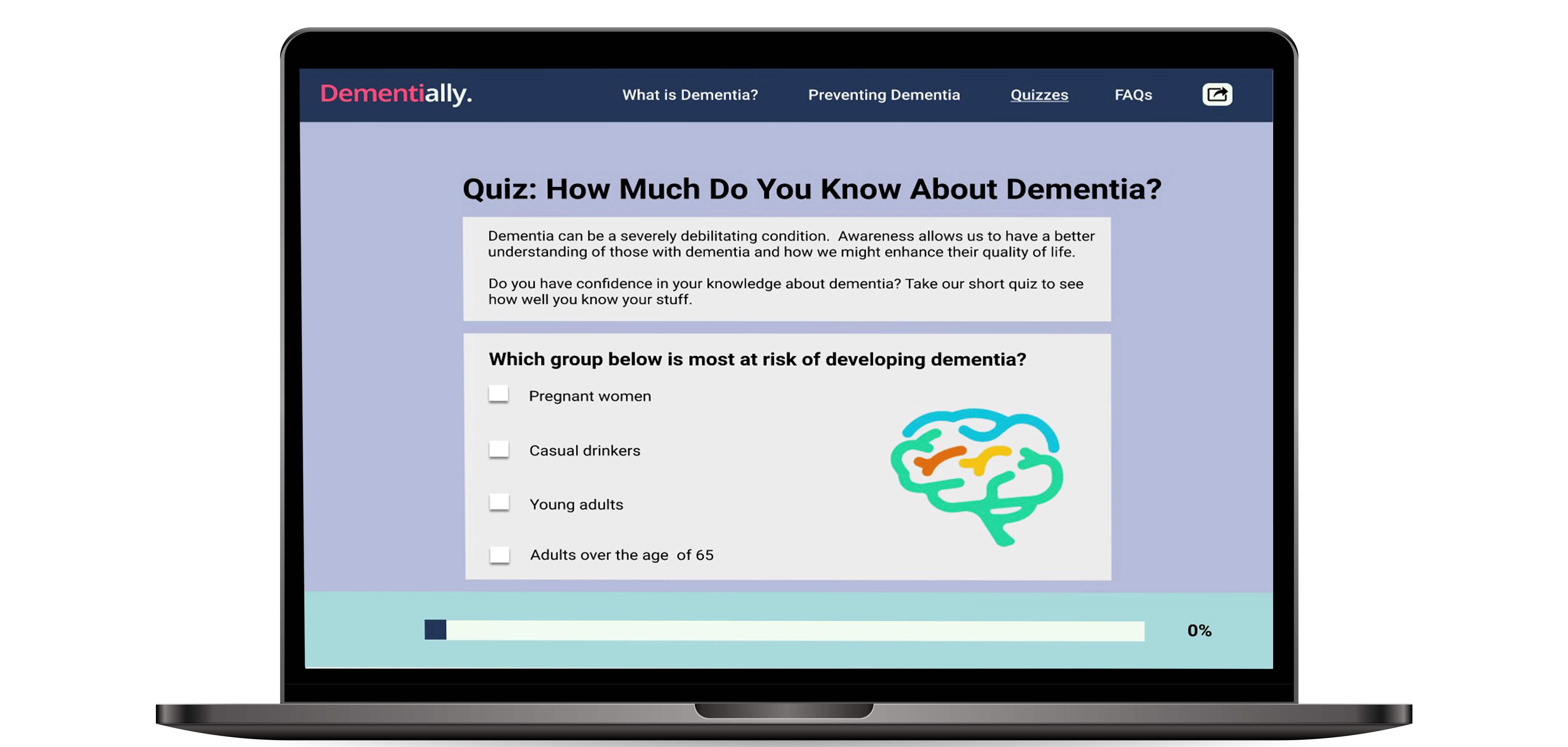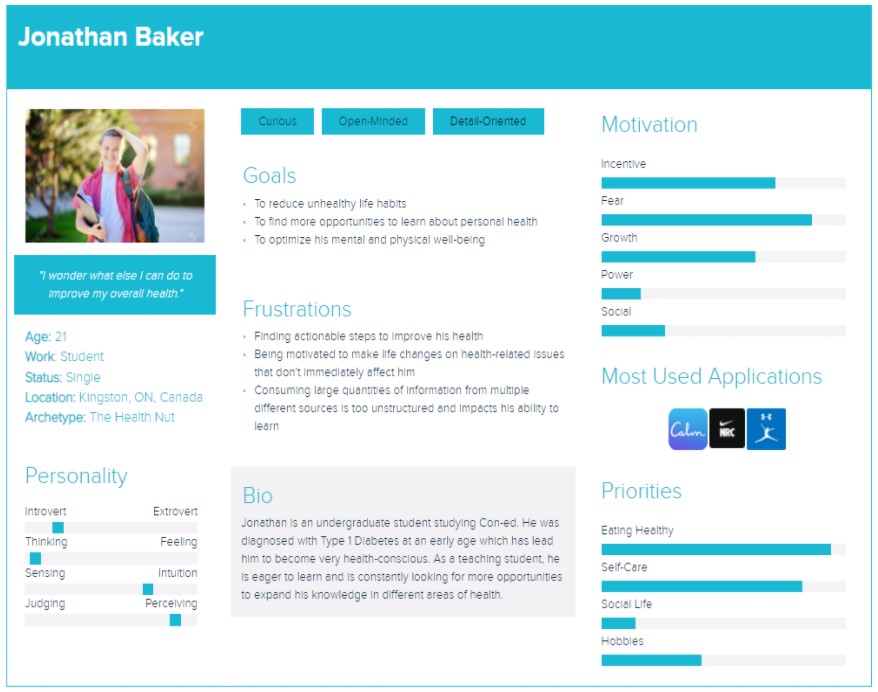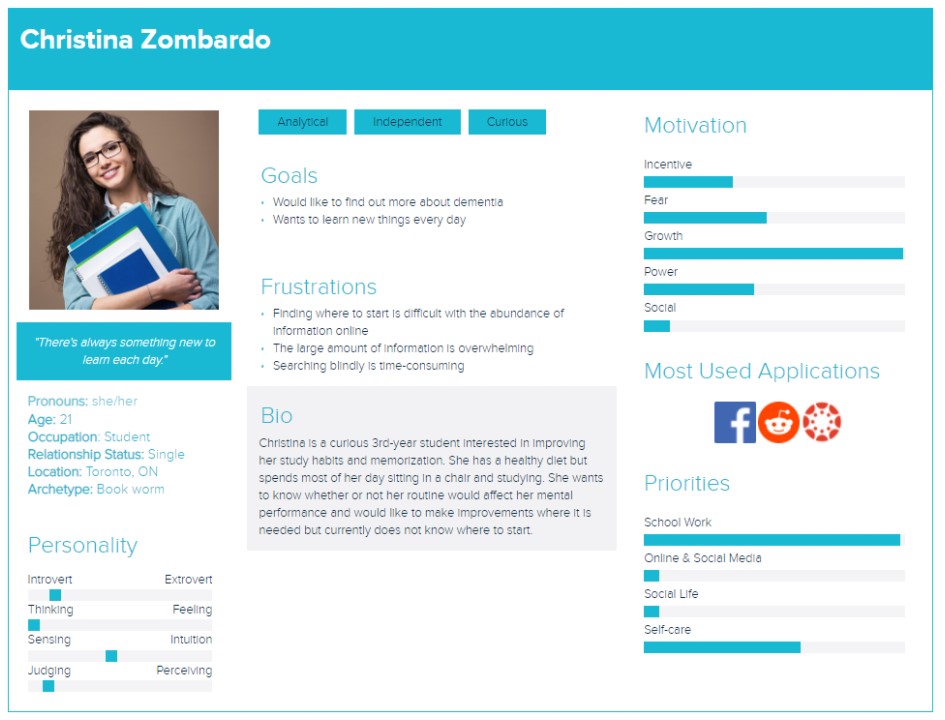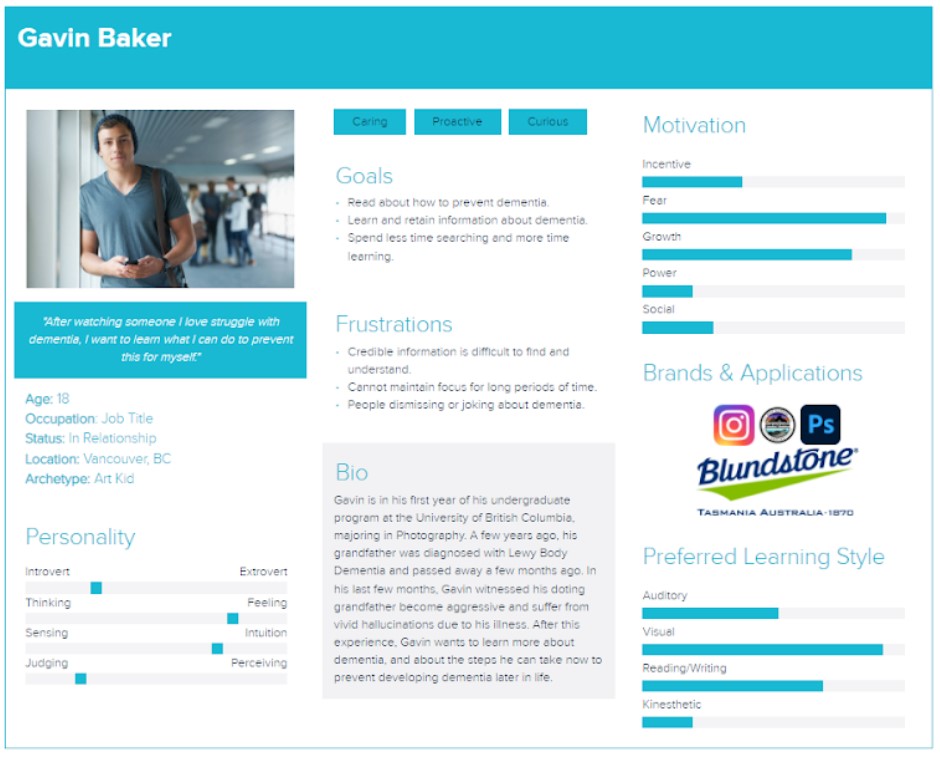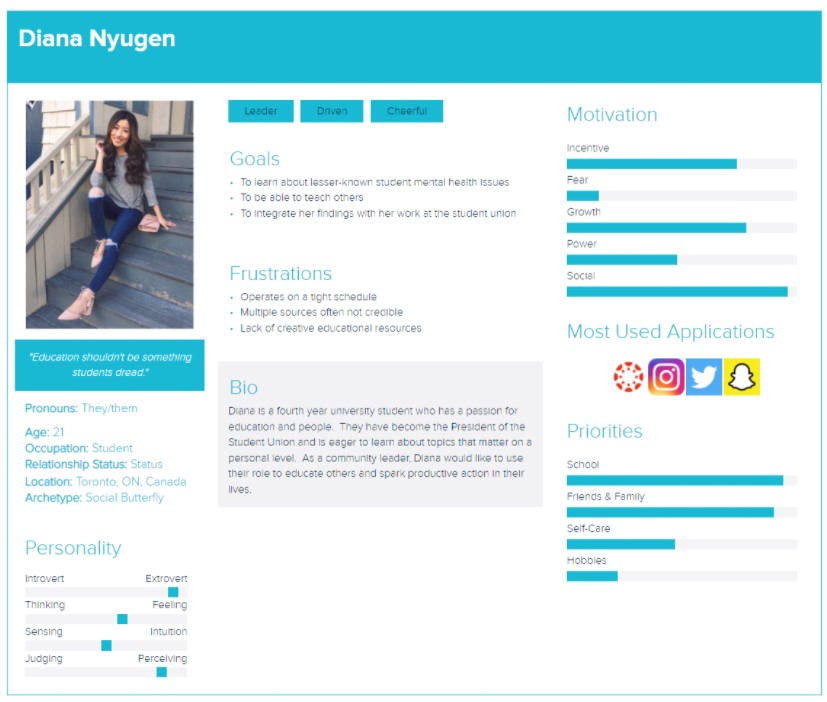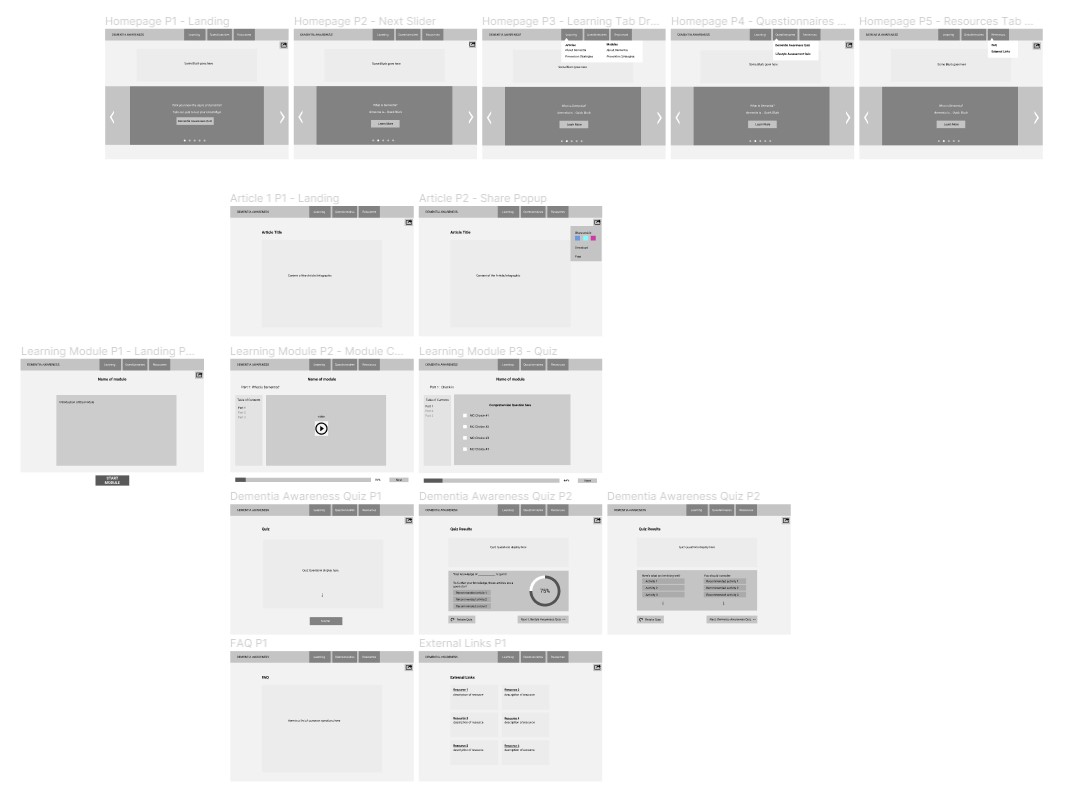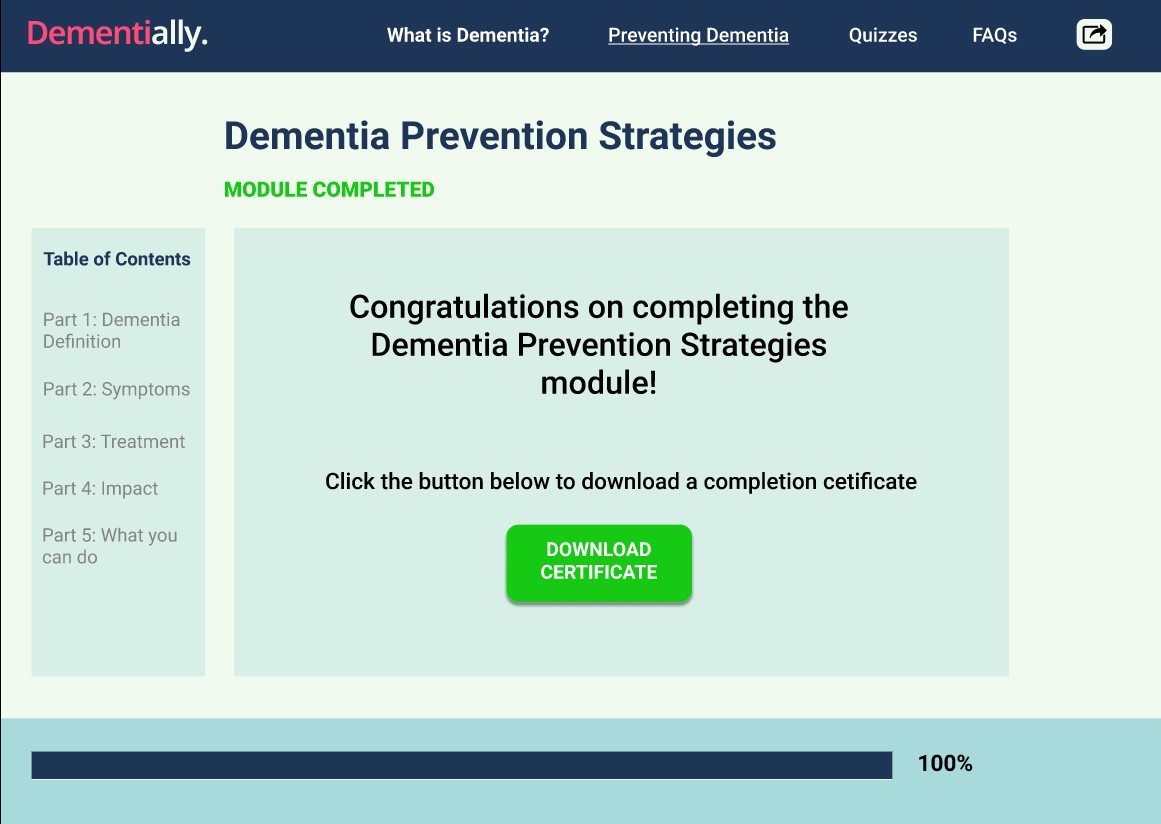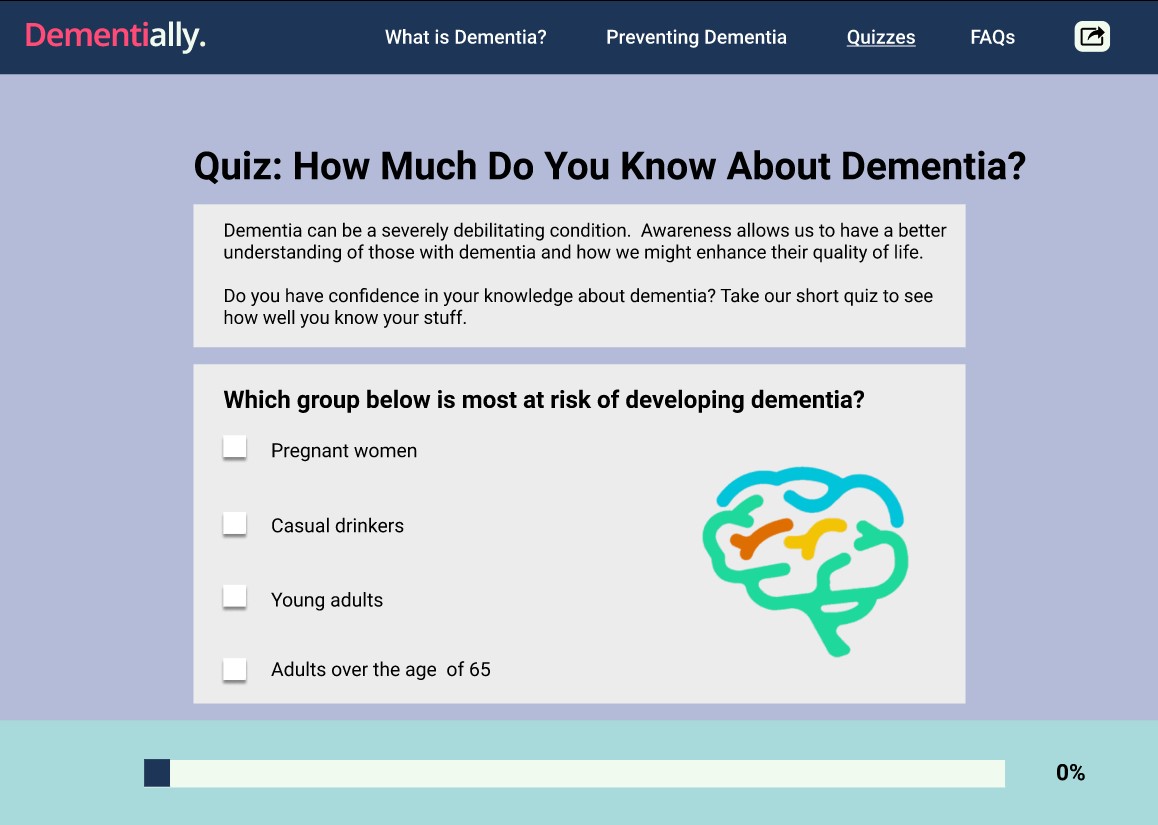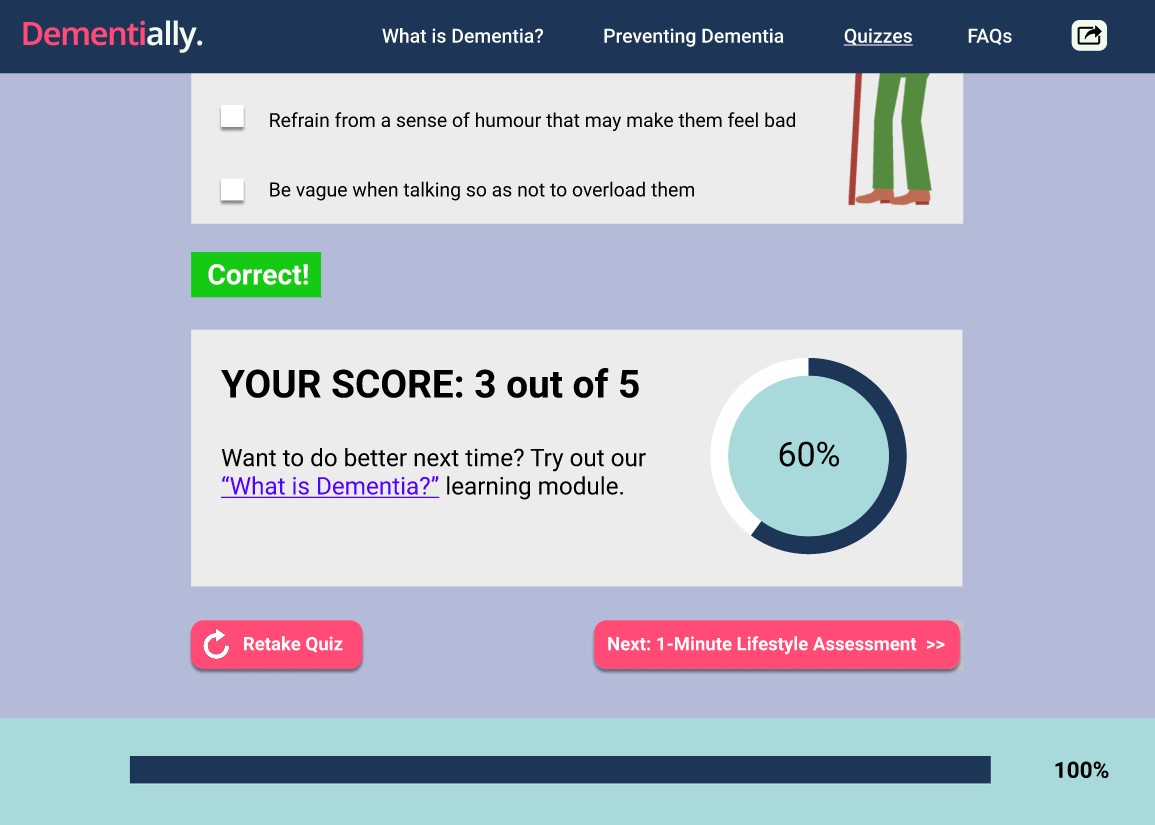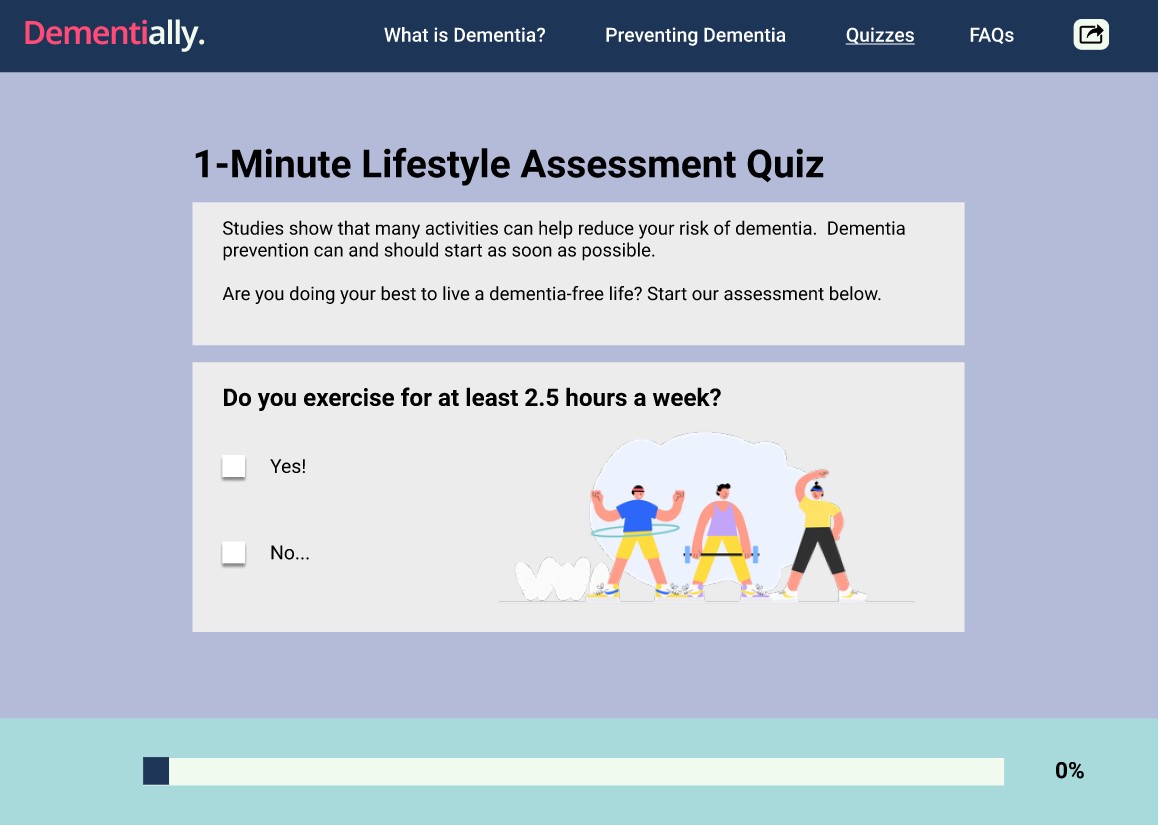Scenario and Use Case : Jonathan Baker
Scenario:
Jonathan is an undergraduate student studying teaching. Although he has never had any formal education in dementia, he has heard about it throughout his life from various forms of media such as social media and TV. After being diagnosed with Type 1 Diabetes, he has become more conscious of his lifestyle choices and how they impact his health, and makes a consistent effort to improve his personal well-being in other areas. While doing some research online about disease prevention, he rediscovers the term dementia through an article about deadly diseases but cannot find any actionable steps that he can take from it. Through using a search engine, he comes across various different sources but finds the medium of reading long pages of text boring and unengaging. He also finds it difficult to relate to and care about the health issue as it doesn’t appear to affect him in the near future. He discovers the group’s website in the search engine results and is drawn by the keywords of ‘prevention strategies for students’. Jonathan wants to self-assess his current level of risk for developing dementia and find ways that he can prevent dementia to determine what changes he should make to his lifestyle.
Use Case:
From the website’s home page, Jonathan sees a dementia risk self-assessment tool. His goal is to measure his risk level based on his current habits and to find actionable prevention steps that he can take to change his life habits.
1. The user enters the website’s home page.
2. The website displays the self assessment tool as a button from the homepage.
3. The user selects the self assessment tool button.
4. The website redirects the user to the self assessment tool page.
5.The website prompts the user to enter their age.
6. The user enters their age into the text input box.
7. The website prompts the user to answer a series of multiple choice questions based on their current life habits.
8. The user answers the questions by pressing on the answer bubbles to indicate their choice.
9. The website provides the user with a number scale that indicates their level of risk and their placement on it based on their answers.
10. The website lists a series of actions that the user can take to lower their risk level.
11. The website prompts the user to enter their email to save their results.
12. The user provides their email.
13. The website confirms that an email has been sent.
14. The website provides a list of links that the user can access for further reading or research.
Alternative cases:
6. If the age entered is invalid:
6.1 The website highlights the box in red and displays and error message
6.2 The website prompts the user to re-enter their age in a numerical format and provides an example: “E.g., 19”
6.3 The website returns to step 5

